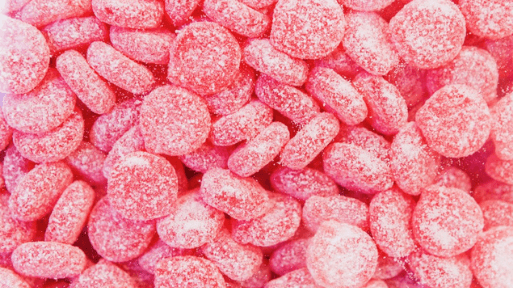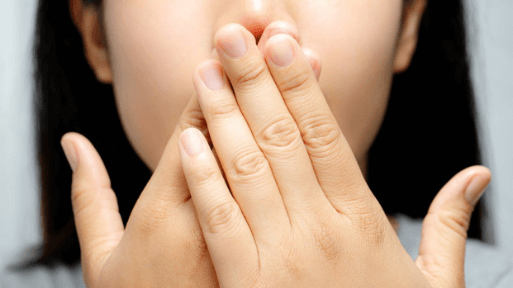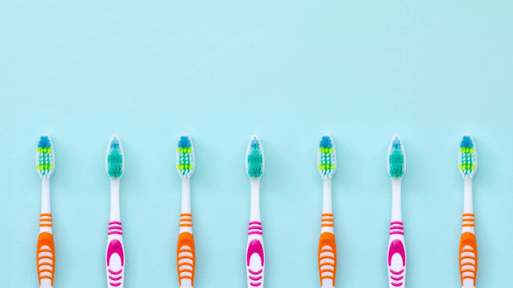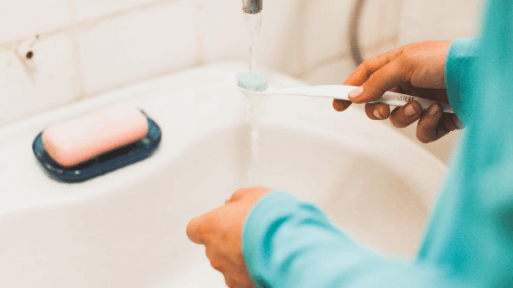How to Prevent Dry Mouth During Sleep

Dry mouth during sleep can be the cause of a lot of problems—bad breath, poor sleep and even gum disease to name a few. If you suffer from it, don’t worry; you’re not alone. Millions of people experience dry mouth, with the nighttime often bringing about the worst of it.
Dry mouth can also be caused by medication, smoking, radiation treatment, aging, and even diseases such as diabetes or Parkinson’s. Luckily, there are plenty of ways to keep your mouth moist and your oral health in great shape.
Here are a handful of ways to prevent dry mouth during sleep:
Does Sugar Really Cause Cavities?

Sugar is delicious. There’s no denying it. But does sugar really cause cavities?
First things first: What’s a cavity? A cavity is a hole in a tooth where tooth enamel has broken down due to decay. If left untreated, a cavity can create a hole through the tooth and expose nerve endings.
Can sugar be the cause of one of these pesky cavities?
No, sugar doesn’t cause cavities, bacteria causes cavities. But sugar is like a magnet for bad bacteria. Sugar digestion also creates bacteria which, if not properly managed, will lead to not just cavities but also gum disease and may even result tooth loss.
Can Birth Control Affect Your Oral Health?
 Birth control pills can have an impact on your oral health due to the changing hormones in your body. The pills increase a woman’s inflammatory response, causing gums to be redder and swollen and to bleed more readily. It stands to reason that hormonal changes can affect your gum health, as the hormonal changes can cause inflammation of the gum tissue. However, a recent study suggests young women found these hormonal agents had no effect on gum tissues.
Birth control pills can have an impact on your oral health due to the changing hormones in your body. The pills increase a woman’s inflammatory response, causing gums to be redder and swollen and to bleed more readily. It stands to reason that hormonal changes can affect your gum health, as the hormonal changes can cause inflammation of the gum tissue. However, a recent study suggests young women found these hormonal agents had no effect on gum tissues.
The best way to tell if your birth control is affecting your oral health is to get a baseline reading prior to getting on birth control. In addition, be sure to keep your hygiene in tip-top shape. Otherwise, negative side effects from poor hygiene will muddle your baseline for your birth control. Each type of oral contraceptive has different levels of hormones, so if the impact on your gum health is severe, you could try experimenting with a different one.
When was the last time your hygienist showed you how to brush and floss? Did you know that many people brush too hard and don’t floss properly? If you’re experiencing redness, swelling, or discomfort in your gums, we’re happy to help you get back to feeling normal again.
Schedule Your Appointment Today
Ready to have the best smile of your life? Schedule an appointment today and our team will get you on your way to a happier, healthier smile.
The Keto Diet and Oral Health

While the keto diet may be popular, what impact does it have on your oral health?
The keto diet consists of high-fat and low carb foods—cheese, nuts, fish, meat, veggies, for example. That idea is that intaking this kind of food forces your body to burn fats rather than carbohydrates. While this diet may work for you, there’s a side effect you should be aware of: keto breath.
What does it smell like? It has a fruity or acetone smell but can be much worse if there’s a high bacteria count in your mouth. In that case, you reach a level of bad breath known as “dragon’s breath.” The side effect is common, so you’ll want to be extra vigilant with your oral health if you want to keep your breath in tip-top shape. Other tips include:
- Drink plenty of water. A hydrated mouth keeps bacteria at bay.
- Use alcohol-free mouth wash. Mouthwashes containing alcohol have a drying effect on your mouth, ramping up bacteria production.
- Ease into the diet. Rather than jumping in with both feet, consider taking on the new diet slowly, allowing your body to adjust.
- Watch your stress levels. Stress reduces the flow of saliva (creating a playground for bacteria) and it also slows the digestion of proteins.
Schedule an Appointment Today
Are you ready to have the best breath and smile of your life? Schedule an appointment today and we’ll help you reach your oral health goals while you reach your weight loss goals.
What Your Tongue Can Tell You About Your Health

Your tongue is an amazing thing. Not only does it allow you to taste delicious foods, it also helps you create suction for a straw and starts the act of swallowing. Did you know your tongue can also tell you about your health?
- White coating – If you notice parts of your tongue appear white, this may be oral thrush. It’s a yeast overgrowth that can cause further health complications if not treated. However, if you brush your tongue and the white goes away, you’re good to go. Speaking of which, when’s the last time you brushed your tongue?
- White patches – These could be leukoplakia, caused by irritation from tobacco or alcohol use. Leukoplakia is a mucous membrane that can’t be scraped off. It can disappear over time if tobacco and alcohol use are stopped.
What Causes Bad Breath?

If you have bad breath and it wasn’t caused by something you recently ate, it could be a sign that you have gum disease, tooth decay or an underlying medical issue. Bad breath, otherwise known as halitosis, can be embarrassing—but it’s important to figure out its root cause and remedy the issue.
The most common reason for bad breath? Poor oral hygiene. If you don’t keep your teeth and gums clean, decay and debris in your mouth can produce unpleasant odors. If you brush twice a day and floss daily and still have bad breath, schedule an appointment with your dentist. They’ll help identify the cause.
Gum disease (aka periodontitis) also causes bad breath. Bad breath is just one of the symptoms. Other signs you may have gum disease include swollen gums and bleeding. Left untreated, gum disease can wreak havoc on your health causing all sorts of dental problems and tooth loss.
How Often Should You Replace Your Toothbrush?

Your toothbrush does a lot of work. It reaches into the nooks and crannies of your mouth to help clean out food, bacteria, and other gunk. Over time, your toothbrush takes a beating. How often should you swap your old one out for a new one?
You Should Replace Your Toothbrush Every…
Over the months, your toothbrush bristles fray, losing their ability to properly clean. If you’re like most people, you only change out your toothbrush when you visit the dentist twice a year. But the truth is you should be swapping out your toothbrush much more often.
The most common recommendation for changing out your toothbrush is every two to four months. If you’re uncertain of whether it’s time to change, keep this phrase in mind: When in doubt, change it out.
How to Choose the Best Floss for Your Teeth

Flossing plays a major role in your oral health. But how do you know which floss is best for you? Let’s take a look.
What are the Types of Floss?
There are four kinds of floss: woven floss, shred-resistant floss, unwaxed floss, and electric flossers. While you may prefer one over the others, is there really a difference between the four types of floss?
In terms of plaque removal, a study published in the Journal of Periodontology suggests the answer is no. 25 people were given the different types of floss and the evidence suggests they’re equally effective at removing plaque—though the electric flosser showed the greatest plaque removal upon first use.
Does Chewing Gum After a Meal Prevent Cavities?

What’s better than a minty stick of gum after a meal? After all, it freshens your breath and helps prevent cavities. Or does it?
What Studies Say
Gum chewers, rejoice: We have good news about post-meal gum (as long as you opt for the sugar-free kind).
Studies have shown that chewing sugar-free gum for twenty minutes after eating increases saliva production. Saliva in turn helps lower the risk for cavities and dental erosion; the act of chewing presses saliva into hard-to-reach areas, washing away plaque and bacteria.
How about that? Chewing gum can actually be a part of healthy oral hygiene.
5 Common Misconceptions About Children’s Teeth

We all want our kids to grow up with strong and healthy teeth. Staying informed is crucial in making that wish a reality—especially when it comes to debunking myths. Here are five common misconceptions about children’s teeth to help you become a more informed parent.
Baby Teeth Don’t Matter
Just because baby teeth eventually fall out doesn’t mean they aren’t important. Kids usually have about twenty baby teeth by the age of three. They help the mouth hold enough space for adult teeth, help the jaw develop correctly, and make sure adult teeth align properly.
Preschool-Aged Children are Always Scared of the Dentist
This doesn’t have to be the case. By taking your child early and often, they’ll form a friendship with the staff and a familiarity with the sights and sounds of a dentist’s office.
5 Tricks for a Better Brushing Routine

Do you have trouble brushing your teeth twice a day? You’re not alone.
Set a Reminder
While your phone is a fun place to unwind with viral videos and internet surfing, it’s also a great tool for creating a routine. Set a reminder to alert you twice a day to brush your teeth—once when you wake up and another just before you turn in for the night.
Choose a Theme Song
Pick a fun song to brush your teeth to and you’ll be dancing right into a new brushing routine.
Create a Smile Diary
Want to see how your teeth get healthier over time? Snap a photo every day after you brush in the morning and review the photos every 30 days. This can help motivate you and create fun content to share on your social media channels.

